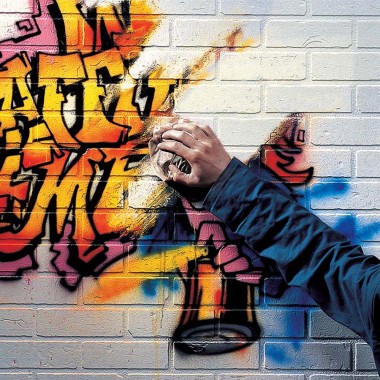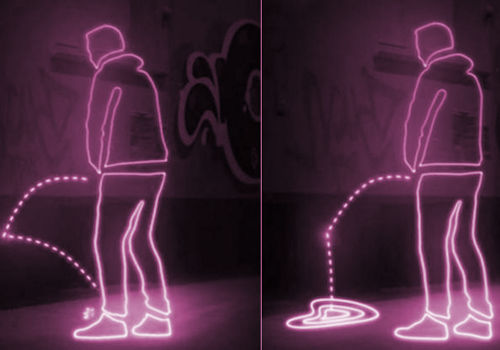 Paints to protect supports
Paints to protect supports
This article is dedicated to certain particular paints allowing specific protection, which are part of the field of technical paint that can be found applied in fields as varied as industry, architecture, interior decoration, l agriculture… It is well known that non-artistic paints have as their primary objective, not coloring or the visual aspect, but rather protection. Indeed, since paint is used to cover materials such as metal, walls, wood, it is mainly intended to create a sort of protective screen for the raw material, in order to protect it from bad weather, for example, heat, sun, and especially rain and humidity. The latter has a particularly oxidizing and corrosive effect on most materials.
When we talk about specific protective paint, we are talking about protection targeted at a precise external factor: for example, when we talk about our anti-heat varnish, this this has a blocking effect for the sun's infrared rays, which are, if you don't know, the part of light that is responsible for heating.
Stardust has always been deeply involved in all specialty coatings and that is not just specialty paints, but also specialty primers, and specialty topcoats.
Paints are always created from a material or a molecule that offers particular properties, for a particular use, that is, a practical need that users have expressed.
Here is another example, with the urine protection spray. This very special product was developed in response to the upsurge and the "pressing need" expressed by many customers, including individuals and property managers. It is by using the extraordinary properties of silicones that we have created this paint which has a repellent effect for all liquids, urine included.
Protective paint
Paints naturally form a protective layer and so do varnishes. The latter are particularly suitable for protecting almost all supports from external aggressive factors.
Depending on their composition, they will make it possible to resist for a longer or shorter time, to light factors or to extreme conditions of use.
By extreme conditions, we mean salt spray, abrasion, chemical splashes... and there is surely a long list of candidates for the wear of materials, with in the first line, the most known, water and its oxidizing power.
Water and air have a very strong oxidative power, especially on metals. The protection of metals involves blocking water, but also thanks to pigments which have a natural anti-corrosion power allowing them to block the formation of rust.
The protective power of a coating depends on its thickness, but above all on its composition. There are many paints that allow the support to breathe, but the passage of molecules is allowed in both directions, that is to say from the inside to the outside and from the outside to the inside naturally. This is the case with facade paints.
There are particularly waterproof and resistant paints such as polyurethanes, but these form a plastic layer so impermeable that neither air nor water can perspire through this layer of paint. For this reason, they cannot be used, for example, on facades, or complete walls, because the humidity that manages to make its way from the inside, would quickly cause the paint to blister, because it could not escape. There are quite extreme protective coatings, such as nano-ceramic protections which make it possible to create a real glass screen, admittedly micrometric in thickness, but very real: this kind of coating protects against sunlight, humidity, heat, corrosion, abrasion...
 Anti-wave paint
Anti-wave paint
Here is a rather rare and little-known coating which, however, has a fairly large number of users, moreover, in increasing quantities every year, with the development of Wi-Fi Internet networks, it is the anti-wave paint based of graphite. This material is one of the most accessible and effective for creating an anti-radiation barrier. This wave blocking works on all fairly long waves, i.e. from microwaves to waves from mobile phones. Of course, the level of protection is variable and difficult to assess: it depends above all on the thickness of the final layer.
Applying 3 coats of this anti-radiation paint on a wall does not mean that the entire Internet network is going to be blocked, because naturally, the waves have the formidable capacity to circumvent obstacles and to diffuse in all directions of space. However, it is one of the best and easiest protections that can be implemented on a wall.
Hydrophobic paint
If you've never experienced this type of hydrophobic paint, or seen any demo videos, then it's worth taking a look at our spray product page hydrophobic.
This perfectly invisible and colorless product has a very long life, which is measured in several years at least. It is quite impressive in terms of its effectiveness in blocking all types of liquid.
If this product is applied to a dry and sound wall, whatever the material of this wall, i.e. brick, roughcast, concrete, paint, then absolutely no difference will be seen between the treated area and the untreated area.
A single coat is enough and the result is quite surprising : if it starts to rain on this roughcast wall, you can easily see a completely dry area and this is the area that has been treated with this hydrophobic product.
This produces a very powerful repellent effect for water, it should not be abused because it does not allow the walls to breathe, that is to say as well to suck up as to reject the humidity.
Anti-graffiti paint and clearcoat
Most facade and exterior wall paintings, i.e. buildings, but also tunnels, or urban works, are made of raw materials, such as brick or concrete, or else of acrylic paint, which are often the target of graffiti and other damage. Anti-graffiti paint and clearcoat is a modern solution that has existed for twenty years to facilitate the cleaning of graffiti. Of course, these paints do not prevent graffiti, but thanks to their hardness and impermeable surface, they prevent the penetration of inks, pigments and facilitate cleaning.
When graffiti is done with spray paints or markers, then it will be very difficult to remove on porous surfaces such as acrylic paints or concretes. In these cases, the solutions will be wet sandblasting (hydro-gumming) or simply repairing the paint. Trying to clean an acrylic painting with cleaning solvents is impossible, as this will simply melt the paint and embed the graffiti deeper into the paint without making it disappear.
Anti-graffiti paints are derived from industrial or body paints and are formulated with polyurethane. With anti-graffiti cleaners, it becomes easy to remove graffiti on their surface, without the anti-graffiti paint melting.



















































































